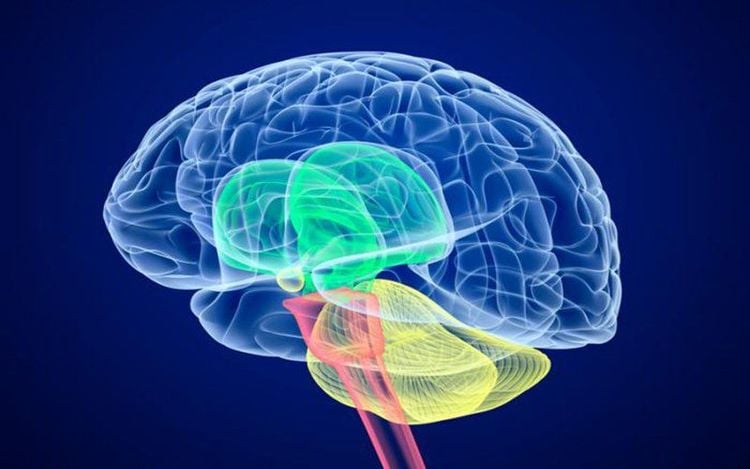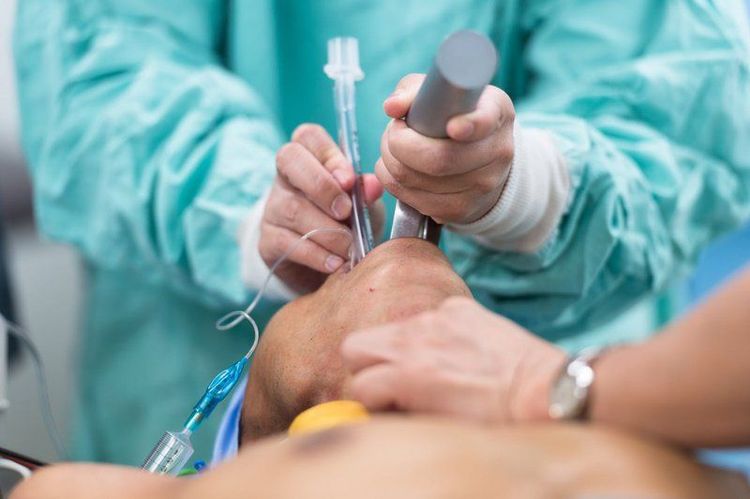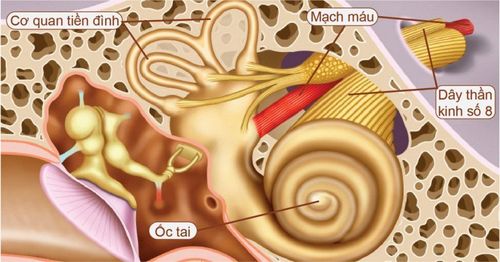This is an automatically translated article.
The article is expertly consulted by Master, Doctor Ton That Quang - Head of Anesthesia - Anesthesia Unit - Department of General Surgery - Vinmec Nha Trang International General Hospital. The doctor has more than 15 years of experience working in the Anesthesia - Resuscitation industry.1. Learn about neuromas 5, 8
1.1. Nerve tumor 5 Nerve pain 5 is a specific symptom, nerve pain 5 is due to different causes and pathophysiological mechanisms. The majority of patients with 5th neuralgia on clinical examination are completely normal or misdiagnosed due to dental caries or other diseases related to the teeth.In addition to the oral region, 5th nerve pain can be caused by tumors located in the pontine - cerebellar junction and adjacent areas of the pons - cerebellar plexus such as: meningioma, epidermoid cyst, metastatic melanoma , aneurysm aneurysm, pituitary gland tumor... Signs to recognize neuroma 5 include:
The pain caused by neuroma 5 often has a sudden onset, burning pain, The pain lasts from a few seconds to a few minutes, occurs many times a day, the pain level will increase over time. Pain when chewing, speaking, or when irritating a spot on the face.

Large cord tumors will compress the brainstem or cerebellum, spread to the middle cranial fossa or lower to the occipital foramen, causing 8th neuralgia with symptoms such as:
Tinnitus or hearing like "cic" sound in the head. Dizziness, loss of balance, unsteadiness, unsteadiness due to vestibular syndrome Increased intracranial pressure when the tumor is large. Patients will have headache, vomiting, papilledema. Hearing loss, gradually causing deafness, facial numbness due to compression of the V cord, peripheral hemiplegia due to compression of the VII nerve, difficulty speaking and swallowing due to the compression of the IX cord... In case the tumor spreads, it can cause The patient is bedridden, comatose, or worse, dies.
2. Endotracheal anesthesia to cut nerve tumors No. 5, No. 8
Step 1: Put the patient in supine position, breathe oxygen at least 5 minutes before induction of anesthesia. Then, install the monitor and set up the transmission.Step 2: Treating neuroma No. 5, No. 8 by endotracheal anesthesia.
Oral endotracheal intubation: light into the larynx on the right side of the mouth, push the light deeply, press down on the thyroid cartilage to find the epiglottis and glottis, then initiate anesthesia and perform the Sellick maneuver. Insert the endotracheal tube through the glottis, gently withdraw the laryngoscope, inflate the endotracheal balloon, and secure the tube with adhesive tape.

3. Monitoring and managing complications after endotracheal anesthesia to cut nerve tumors No. 5, No. 8
3.1. Monitoring Monitor the depth of anesthesia based on heart rate, blood pressure, sweating. Monitor heart rate, blood pressure, SpO2, EtCO2, body temperature. If the patient is awake, follow orders; breathe on your own, raise your head for more than 5 seconds; pulse, blood pressure is stable and there are no complications of anesthesia, surgical extubation. 3.2. Management of complications Gastric reflux into the airways: drain the patient's head low, tilt the head to the side, or lie on the side Hemodynamic disorders: Lower or increase blood pressure, arrhythmia, then treat symptomatically Symptoms and causes of Vocal - Gas - Bronchospasm: Provide oxygen, ensure ventilation Vinmec International General Hospital with a system of modern medical facilities, equipment and a team of experts and doctors With many years of experience in medical examination and treatment, patients can rest assured that they will be examined and treated at the Hospital.Please dial HOTLINE for more information or register for an appointment HERE. Download MyVinmec app to make appointments faster and to manage your bookings easily.














